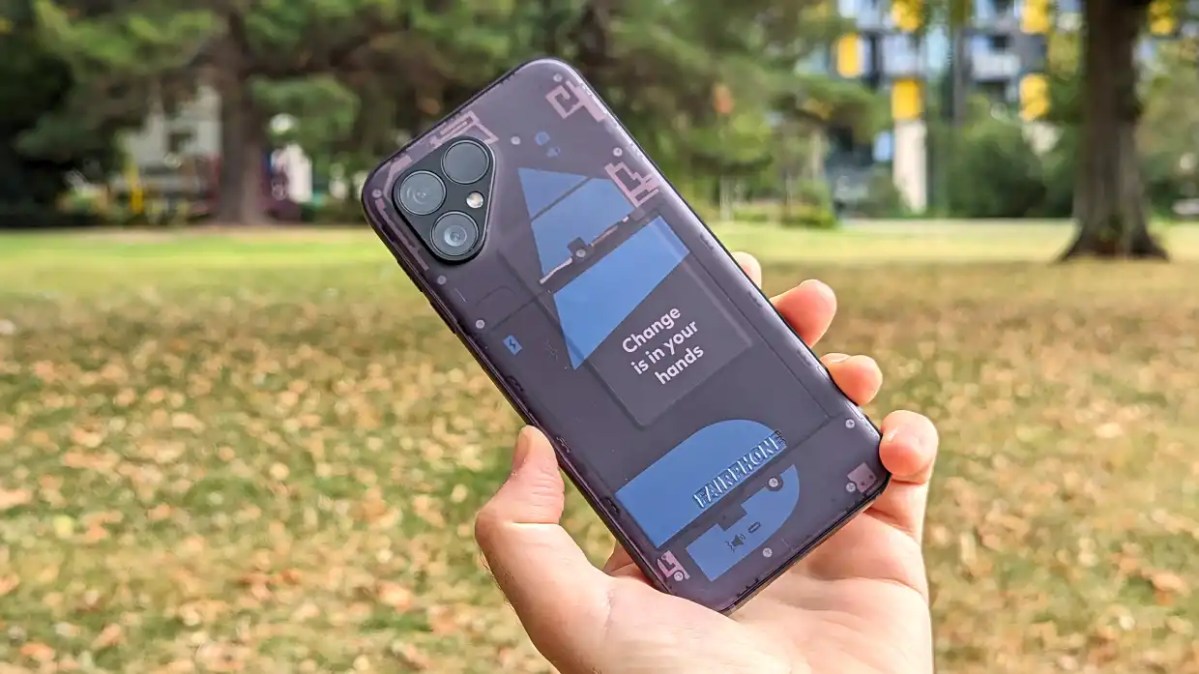One of the best parts about working on a full-sized desktop PC is how easy it is to upgrade. Not so for smartphones: if you want new features, you’re probably going to need an entirely new device. But what if you didn’t? HMD’s newest phone, the Fusion, is trying for that angle. It can be be augmented with “Outfits” that enhance it for photography, durability, or gaming.
The Fusion comes with a Casual Outfit in the box, which is essentially a translucent protective case. Its other Outfits are a little more impressive, with functionality unlocked by six POGO pins on the back of the device. The Flashy Outfit has an LED light ring around the rear camera, which can be flipped forward for selfie mode. It’s also a plastic case, albeit a much more functional one.
The Gaming Outfit is a little more extreme. It’s an external controller in the expandable form factor, a la the Razer Kishi, but uses that proprietary connector instead of Bluetooth or USB-C. The Protective Outfit is, well, basically just an Otterbox case with lots of padding and a couple of lanyard rings.
At the moment only the Flashy Outfit and spare Casual Outfits are available to buy on HMD’s international store. And promising modular upgrades that never actually materialize is kind of a song stuck on repeat, as I’ll show later. But if you want to build your own — perhaps with the aid of a 3D printer — you can use the Development Toolkit, which includes an API for at least some software features. HMD seems to be courting third-party developers and manufacturers, if the submission form is anything to go by.
The Fusion is also making a play for repairability, with four guides already posted to iFixit for relatively easy fixes for the screen and battery, among other parts. It’s definitely in the “affordable” camp if not entirely budget, at $300 USD without any of the extra trimmings. All this is positive…but I can’t help but think we’ve been here before. And never for very long.
We’ve been here before
Modular smartphones have been attempted by bigger companies with more investment. Companies like Motorola, which tried a very similar POGO pin setup for its Moto Mods accessory line on the Moto Z. These add-ons included obvious extras, like an extended battery and speaker, as well as a familiar-looking controller. There were some wild ones too, like a pico projector or a Polaroid-branded photo printer.

Jim Martin/Foundry
The Moto Z was originally launched in 2016, but it wasn’t the only modular phone to come out that year. LG’s G5 was called the company’s “most daring flagship phone ever” by Engadget. Its design was even more radical: The bottom could be popped off, which also removed the battery. This marked a welcome return to user-replaceable batteries at a time when smartphones could really suck down the juice. But you could also swap in a camera grip with physical buttons (but no extra lenses), a bigger speaker, or a VR visor. Talk about ambitious!
But a you might know, the G5 turned out to be flop. In its basic smartphone form it failed to wow reviewers, and most of the functionality beyond easily-replaceable batteries never actually materialized. The phone “failed to generate sales” according to some reports, the company returned to more conventional designs, and I wouldn’t be surprised if the G5 contributed to LG’s ignoble exit from the smartphone market five years later. Motorola abandoned the Z line after three years, too.

Chris Martin/Foundry
Others have taken a stab at a phone that can be upgraded easily. Phonebloks tried to create a phone that was entirely modular, with parts sliding in and out all over the place. It evolved into Project Ara back when Google owned Motorola, and was apparently heading for a consumer release at one point…but eventually just disappeared. Parts of the design may have made it into the Moto Z.
The Fairphone is perhaps a more practical example, if only because it’s focused on a lowered environmental impact and easy repairs by the user. you can’t really expand its functionality, but you can replace a battery or a broken screen with simple tools. It’s now on its fifth generation, and the company is still selling at least some replacement parts for the Fairphone 2.

Henry Burrell/Foundry
The most widespread example of modular, cross-device upgrades for smartphones might be Apple’s Magsafe. While it only handles attachment and charging, it’s at least stayed consistent for the last four years, and has become so widespread that you can get cases and adapters for most Android phones, too. Slowly — oh so slowly — it’s being kinda-sorta-opened up in Qi2.
Modular phones are incompatible with modern design
Will we ever get truly modular smartphones? And by “modular,” I mean upgrades and parts that can persist across generations, possibly even across brands. The truth is, probably not. We have a few factors that are fundamentally incompatible with the kind of options we enjoy on things like desktop PCs, or cars, or laptops.
First, a modern smartphone requires an absolutely incredible amount of engineering, almost all of which is bespoke for each and every model. While some parts can be used interchangeably — notably the processor, camera module, smaller components like the USB-C port soldered into place, et cetera — most can’t. Each phone needs a greater or lesser degree of specific design, and lots and lots of parts made specifically for that model.
And that design has very specific goals, too. Manufacturers are constantly striving to make phones thinner (if not actually smaller), and at the same time, tougher and less prone to breaking, with bigger, longer-lasting batteries. These goals in and of themselves can be contradictory — the infamous “exploding” Galaxy Note 7 was an example of a battery design flaw in a phone that was too thin.
Adding modular capability to this is an almost impossible ask. Hell, just making these phones possible to repair by a technician is already a challenge, as we’ve seen on the latest Pixels. Adding modular components with any kind of access to the internals might just be a bridge too far. That’s probably why the Fusion uses external POGO pins…something I remember fondly from the Nexus One almost fifteen years ago.
Unless you’re willing to make some pretty huge compromises in design, or go with a relatively indie supplier like the Fairphone and forego the latest and greatest tech, this might be as good as it gets in terms of modular smartphones. Barring some giant leap forward in current technology, we’re not going to get truly modular designs any time soon.








:focal(1210x518:1212x516)/origin-imgresizer.eurosport.com/2024/11/26/4066029-82458228-2560-1440.jpg?w=150&resize=150,150&ssl=1)






